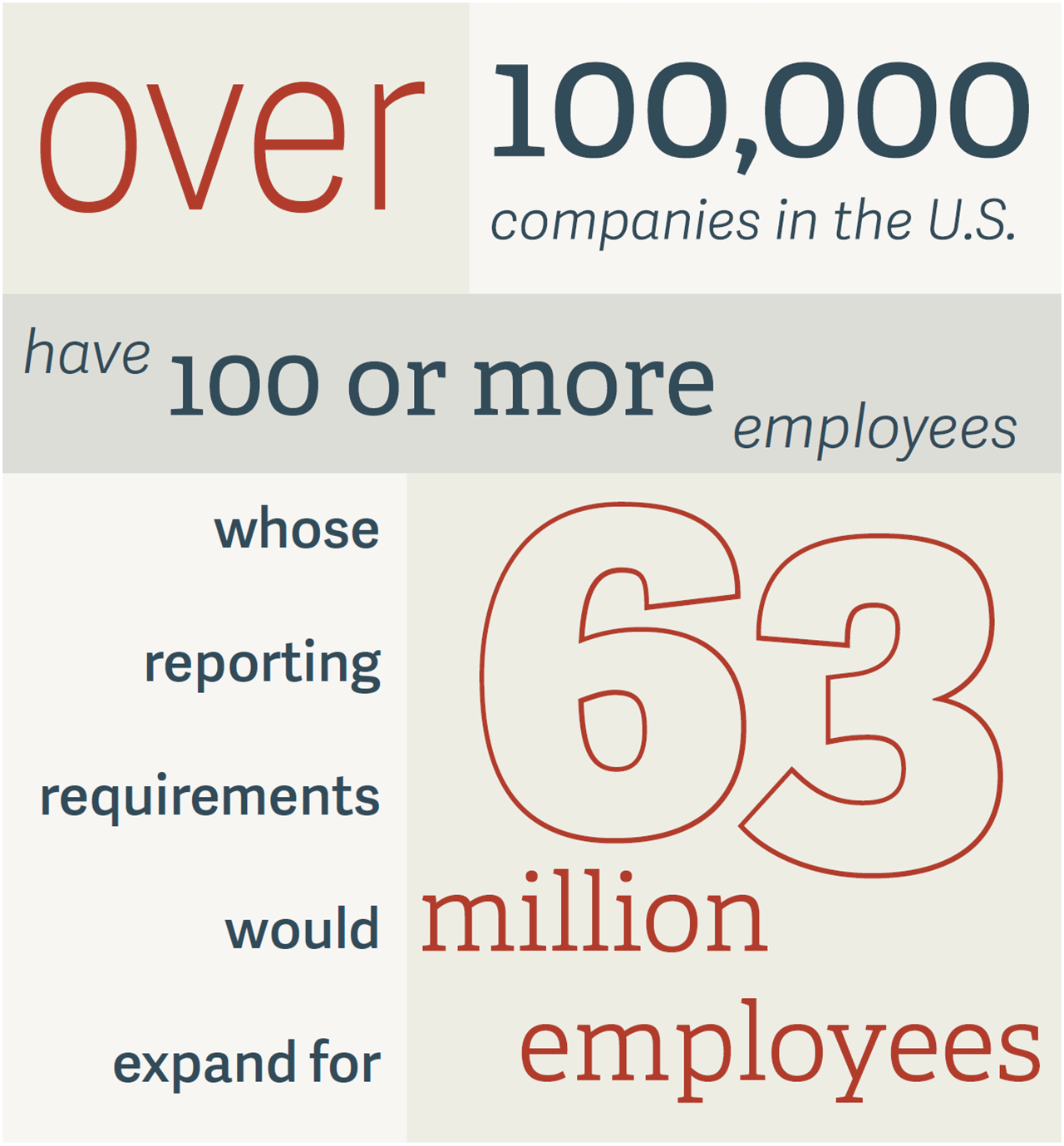-
Will Expanded EEO-1 Data Collection Yield New Insights into Discrimination?
Proposed changes to the US Equal Employment Opportunity Commission (EEOC) employer information report (EEO-1) may impact employer reporting requirements for 63 million employees and substantially increase the risk of wage discrimination class actions.

Employers with 100 or more employees already report data on race, ethnicity, and sex within 10 job categories. Under changes proposed by the EEOC and Department of Labor, in the future they will also be required to submit information on employee earnings and hours worked. The EEOC intends to use these data to try to identify significant differences in pay between employee groups within a firm or when comparing employee pay across firms, such as differences between men and women.
Even though data from an expanded EEO-1 could expose companies to litigation risk, the EEO-1, by itself, may be insufficiently informative for detecting discrimination in practice. In a simple world, if two otherwise identical groups of men and women, for example, are in the same job but paid different wages, the difference in wages would be interpreted as a measure of discrimination. In reality, many individual and firm-specific factors may account for differences in wages.
The expanded EEO-1 will not capture data on labor market experience, work interruptions, education, or other factors that may determine wages. If these are not identified and accounted for, differences in wages between groups such as men and women may be incorrectly attributed to discrimination.
Despite these omissions, observers expect that the EEO-1 will be used by employees in future equal-pay lawsuits. However, future employment class actions alleging wage discrimination should not rely exclusively on the EEO-1. Instead, the data may serve as a starting point for more in-depth investigations of alleged discrimination.
Nevertheless, employers should use the time before the changes go into effect in 2018 to thoroughly evaluate current and historical data to determine whether the EEOC is likely to identify pay disparities. Since the EEOC will also compare company pay practices to industry and/or regional peers, employers may want to compare their internal data to a subsample of the Current Population Survey, used by the US Census Bureau to collect labor force statistics. ■
Laura O’Laughlin, Principal
Shannon N. Seitz, ConsultantAdapted from “Will Expanded EEO-1 Data Collection Yield New Insights?” By Shannon N. Seitz and Laura O’Laughlin, published on Law360.com, September 7, 2016.

